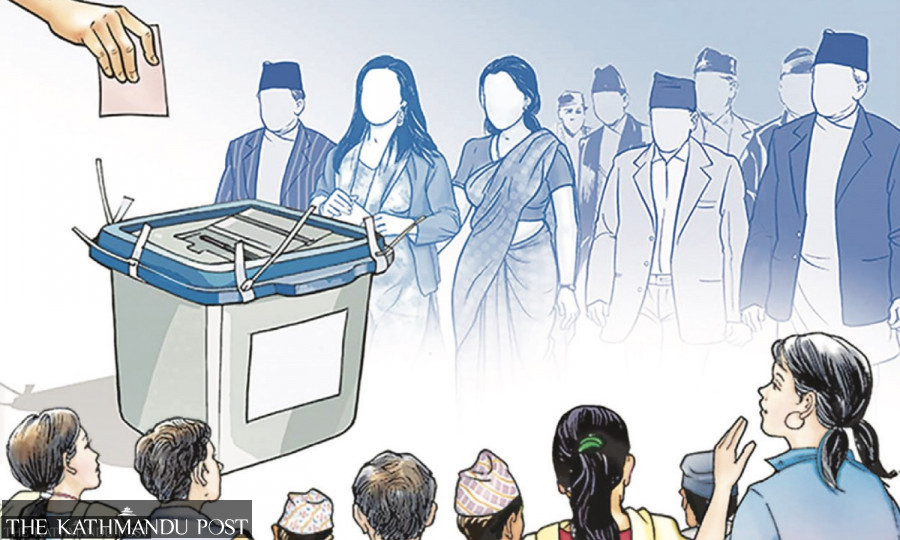Editorial
Revising electoral system
A change in the country’s electoral system cannot be decided in closed-door meetings of political parties.
A range of views have emerged during the ongoing Central Working Committee (CWC) meeting of the Nepali Congress, the largest party in Parliament. There are differences over the working style of current leadership under party president Sher Bahadur Deuba, over whether the country’s constitutional status should be changed from ‘secular’ to ‘a country with religious freedom’, and on whether senior party leader Bal Krishna Khand, who is in judicial custody, should be suspended from all party duties. But starting with Deuba, most CWC members appeared to be in agreement on one issue: revision of the country’s electoral system. Many speakers in the meeting were in favour of filling all seats of the federal lower house through direct election. Instead of electing a portion of the lower house under the Proportional Representation system, some suggested, the upper house of the federal parliament could be filled exclusively through the PR system. They said that until the lower house was directly elected, Nepal would not have a stable government and nor would the Congress ever again get an absolute majority.
This opinion has been building not just in the Congress; it is the same case in the country’s other major parties, including the CPN-UML, the main opposition. Right now, in the 275-member lower house, 60 percent (165) members are directly elected while the remaining 40 percent (110) are elected under the PR quota. Under this mixed electoral system, it is difficult for any party to get an absolute majority. But that is far from the only gripe with the mixed electoral system, and particularly with its PR component. Repeatedly, the PR system, instead of being used to elect members of the traditionally marginalised and oppressed communities as envisioned by the constitution, has been misused to pack the federal Parliament with the near and dear ones of powerful political leaders. Or such seats, it is alleged, are sold to the highest bidders. For all these reasons there is growing dissatisfaction with the PR system. But what is the alternative then? Besides having a fully proportional upper house, the other option could be to set aside some direct election constituencies exclusively for candidates from certain communities so that their representation can be secured even under direct election.
Any democratic constitution is a work in progress and there is no reason it cannot be amended in national interest. Moreover, an electoral system is only a means towards an end, which is representation. If a fully direct election system can ensure adequate representation of marginalised groups and contribute to government stability, that route might be worth taking. But then it would also be wrong to see direct elections as a magic bullet. Governments in Nepal were no more stable under the previous direct electoral system. There is also the question of taking the marginalised groups into confidence on the new electoral formula being worked out for their representation. A change in the country’s electoral system is not something that can be decided in closed-door meetings of political parties. Such a vital issue must first be widely discussed, and the concerned stakeholders taken into confidence. It would be dangerous for one section of the society to impose its preferred set of solutions on another section.




 19.12°C Kathmandu
19.12°C Kathmandu














